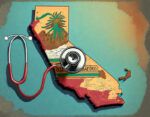Taming the Heat – Summer Safety Guide
The heat never seems to set any appointments. California is the perfect showcase, where one day it’s pounded with record rainfall and the other hitting record highs. Even though it has been a relatively calm June, a storm is brewing. Definitely not the type of storm that brings rain.
In fact, the Earth has been repeatedly breaking its records for hottest day recorded within the past week, alone. A panel of experts gathered to discuss the importance of summer safety. Experts, presented by Cal OES and LISTOS, covered a variety of topics related to extreme heat and its impact on vulnerable communities.
Speakers

- Diana Crofts-Pelayo, Assistant Director, Crisis Communication & Public Affairs, Cal OES
- Alf Lamont, CEO, Lamont Digital – Listos California Digital Specialist
- Jacqueline Nushi, Emergency Preparedness Coordinator, Project Camp
- George Hernandez Mejia, Director of Emergency Operations, Community Organized Relief Effort (CORE)
- Peter Thao, Program Specialist, Fresno Asian Business Institute and Resource Center
Have a Plan
From the importance of having a plan to the resources available to help communities stay safe, planning for the summer heat and adapting to the new heat trends can save lives.
Planning is essential going into any battle, and the heat is no different. As Peter Thao from ABIRC noted, “it’s not a matter of if, it’s a matter of when.” Extreme heat doesn’t set appointments, it just shows up, plan to ensure that your safety.
Knowing where to go in case of an emergency, having a supply of water and other essentials on hand, staying informed about the latest weather alerts are all essential aspects that are needed to be noted.
Vulnerable Communities
Another important topic covered in the briefing was the impact of extreme heat on vulnerable and underserved populations. As Regina Wilson from LISTOS noted, “we know that certain communities are more at risk than others.” This includes low-income communities, seniors, and people with disabilities, among others. To help these communities prepare for extreme heat, the briefing highlighted a range of resources, including cooling centers, transportation assistance, and outreach programs.
One of the most valuable resources available to communities is the LISTOS California program. This program, designed to help vulnerable communities prepare for disasters, provides resources and services to help people ready up for the summers. These include educational materials, outreach programs, and emergency preparedness kits. Regina Wilson brought to attention that the communities should be well informed “about the resources that are available to them.”
In addition to the resources provided by LISTOS, there are a number of other steps that communities can take to prepare for extreme heat. These include staying informed about the latest weather alerts, staying hydrated, and avoiding outdoor activities during the hottest parts of the day. Communities can also work together to check on their neighbors and make sure that everyone is staying safe.
Stay Informed
Overall, the briefing provided a wealth of valuable information for anyone looking to prepare for extreme heat during the summer months. From the importance of having a plan to the resources available to help vulnerable communities, the experts on the call provided a comprehensive overview of the steps that communities can take to stay safe.
Jacqueline Nushi from Cal OES noted, “we want to make sure that everyone has the information they need to stay safe during extreme heat.” The briefing covered the impact of extreme heat on public health, the importance of community outreach, and the resources available to help communities prepare for disasters all of which are key to being weather smart and being safe during the upcoming heat storms.
Community outreach was a key concern outlined by Sandy Close from Ethnic Media Services, “we need to make sure that everyone has access to the information they need to stay safe.” Reaching out to vulnerable communities, including low-income communities, seniors, and people with disabilities, and providing them with the resources and support they need to prepare for extreme heat was at their center of attention.
The Heated Bottom Line
To that end, the briefing highlighted a range of resources available to communities, including cooling centers, transportation assistance, and outreach programs. These are potential lifelines for people who might not have access to other forms of support. And to that I say: Stay cool, California!


